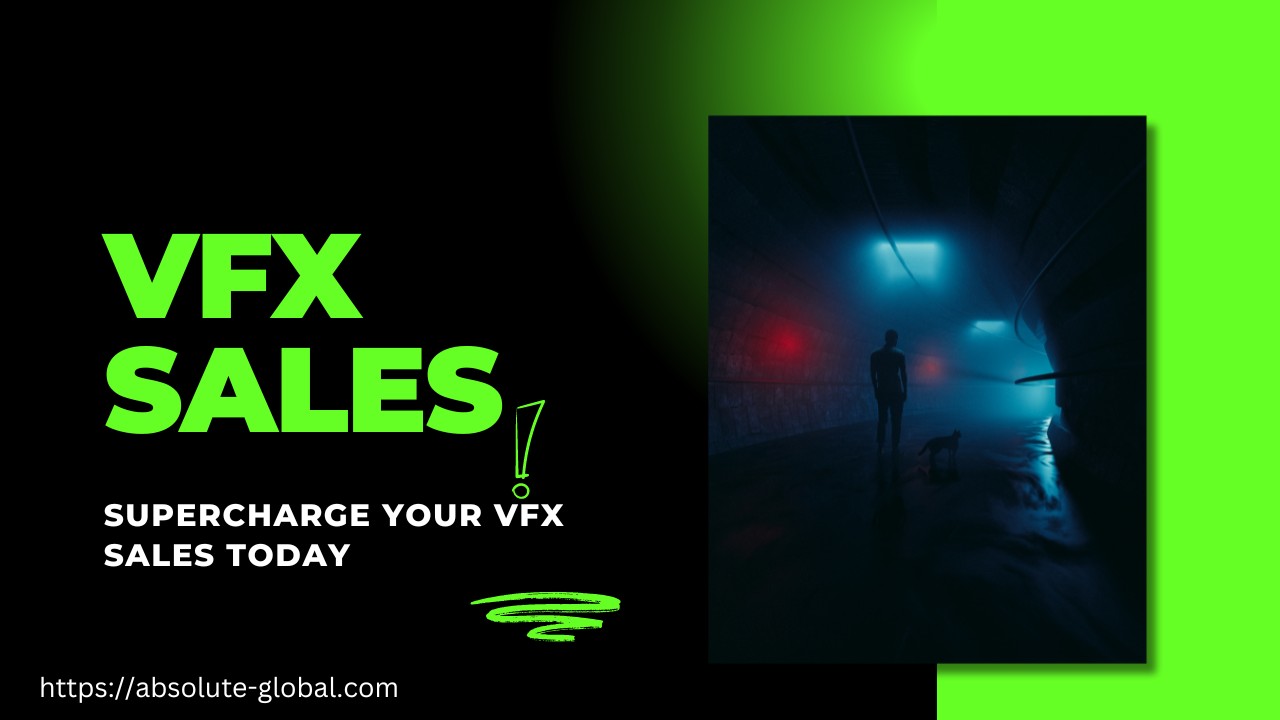Table of Contents
Introduction to VFX Sales Growth
The visual effects (VFX) industry is booming, with an ever-growing demand for high-quality, intricate effects that bring films, commercials, and video games to life. As a VFX professional, you know that delivering top-notch work can make the difference between just completing a project and leaving a lasting impression that drives your sales. But how do you position your services to not only meet client expectations but exceed them? Specializing in techniques like rotoscoping and motion tracking can be your golden ticket.
Understanding Rotoscoping in VFX
So, what exactly is rotoscoping? In essence, rotoscoping is the meticulous process of tracing over footage, frame by frame, to isolate or modify specific elements. This allows artists to manipulate scenes with precision. Learn more about rotoscoping and its techniques here.
How Rotoscoping Impacts Client Projects
The real magic of rotoscoping lies in its ability to make even the most fantastical effects feel realistic. Imagine a client wants to add a glowing, animated figure into a live-action scene. Without precise rotoscoping, that effect might look artificial or out of place. However, with expert-level rotoscoping, that same effect blends seamlessly, making the audience believe in the impossible. Explore how high-quality rotoscoping is changing the VFX industry.
Additionally, clients are always on the lookout for time-efficient solutions. By mastering time-saving rotoscoping techniques—such as using advanced software with automated features—you not only deliver quality but also stick to tight deadlines, a key factor in client satisfaction.
Motion Tracking: A Game Changer in VFX
While rotoscoping focuses on frame-by-frame precision, motion tracking adds another layer of realism to VFX by allowing digital objects to follow the movement of real-world objects within a scene. Explore motion tracking and its critical role in VFX here.
Key Uses of Motion Tracking in VFX
Motion tracking is essential in numerous VFX scenarios. From synchronizing 3D animations in commercials to stabilizing shaky camera footage in films, the technology has a wide array of applications. Motion tracking is especially useful in the advertising industry, where logos or products need to remain consistently aligned with fast-paced visuals, ensuring brands get maximum exposure. Check out how motion tracking transforms VFX in filmmaking.
The Power of Combining Rotoscoping and Motion Tracking
One of the most powerful ways to enhance your VFX offerings is by combining both rotoscoping and motion tracking. These two techniques complement each other by ensuring that your digital elements and the real-world footage interact seamlessly. For instance, in a high-octane car chase scene, you can use rotoscoping to clean up the visual elements and motion tracking to align digital effects with the fast-moving vehicles. The result? A polished and highly dynamic scene that will wow your clients. Learn how combining rotoscoping and motion tracking enhances visual storytelling.
Optimizing Your Workflow with Automation Tools
As the VFX world becomes more sophisticated, so do the tools available to professionals. Leveraging AI-driven automation software, such as Mocha or Nuke, can significantly reduce the time and effort needed for rotoscoping and motion tracking. These programs can automatically track movements or assist with outlining, allowing you to focus on the creative side while reducing manual labor. By optimizing your workflow, you can take on more projects without compromising on quality—directly boosting your sales potential. Check out these top VFX tools for improving your workflow.
Enhancing Client Satisfaction Through Detail-Oriented Work
Clients appreciate attention to detail, especially in the VFX world where small imperfections can ruin the immersion of a scene. By demonstrating your ability to deliver clean, polished results—whether through precise rotoscoping or flawless motion tracking—you’ll quickly build a reputation for excellence. And with that, repeat clients are almost guaranteed. Read more on how attention to detail improves client relationships.
Pricing Strategies for Rotoscoping and Motion Tracking Services
Pricing your VFX services can be tricky, especially if you’re targeting different segments of the market. Consider offering tiered pricing structures, where basic rotoscoping or motion tracking services come at a lower cost, and more complex, labor-intensive projects are priced higher. This way, you cater to both small-scale indie filmmakers and big-budget studios, allowing for diversified income streams. For more on pricing strategies, check this resource.
Marketing Your VFX Services to Increase Sales
An essential part of boosting your sales is marketing your services effectively. In the VFX world, your portfolio is everything. Make sure your showreel is eye-catching and filled with your best work. Showcase projects where you’ve used both rotoscoping and motion tracking to demonstrate your versatility. Also, consider promoting your work on social media platforms, such as Instagram, LinkedIn, and YouTube. Visual industries thrive on engaging, high-quality content—exactly what you can offer. Here’s a guide on how to build a showreel.
Building Long-Term Client Relationships
Once you’ve completed a project, your work with the client shouldn’t end there. Offer ongoing support for future VFX needs, such as revisions or updates to existing work. Establishing yourself as a reliable partner will not only lead to long-term collaborations but also word-of-mouth referrals, which are invaluable in the creative industry. Discover more about nurturing client relationships here.
Understanding the Latest Trends in VFX
VFX technology is rapidly evolving, with new trends like virtual production and real-time VFX emerging. Staying ahead of these trends can give you a competitive edge. By learning and implementing these cutting-edge technologies, you’ll position your services as forward-thinking and innovative, increasing your appeal to potential clients. Stay updated on VFX trends to keep your skills fresh.
Why Continuous Learning is Crucial in VFX
The more you know, the more valuable you become. In a fast-paced industry like VFX, continuous learning is essential. Whether it’s mastering new software, attending workshops, or participating in online courses, keeping your skills up to date ensures you remain competitive and can charge premium prices for your services. Learn more about continuous learning in the VFX industry.
Networking in the VFX Industry
The power of networking cannot be underestimated. Building relationships with filmmakers, production companies, and advertising agencies can open up a wealth of opportunities. Attend VFX conferences, join online communities, and don’t be afraid to reach out to potential collaborators. Networking is not just about finding clients; it’s about building a reputation within the industry. Check out VFX industry events to get started.
Leveraging Client Testimonials to Boost Credibility
Client testimonials and case studies can be incredibly powerful marketing tools. Positive feedback from satisfied clients helps build trust and credibility. Make it a point to collect testimonials after completing projects and feature these on your website, social media, and marketing materials. Read more about the power of client testimonials.
Conclusion
From mastering technical skills like rotoscoping and motion tracking to optimizing your workflow with automation tools and smart marketing, there are numerous ways to boost your VFX sales. By focusing on detail-oriented work, pricing your services strategically, and staying ahead of industry trends, you’ll be well on your way to growing a thriving VFX business.
FAQs
- How long does rotoscoping usually take?
The time required for rotoscoping varies based on the complexity of the scene. A simple scene might take a few hours, while intricate projects can take several days or even weeks. Read more about the factors influencing rotoscoping timelines. - What’s the best software for motion tracking?
Popular motion tracking software includes Mocha, Adobe After Effects, and Nuke. The choice depends on your project requirements and budget. Explore the top VFX software options here. - Can motion tracking be used in live broadcasts?
Yes, motion tracking can be used in live broadcasts, especially in sports events and live TV shows to add real-time graphics and effects. Find out how motion tracking is applied in live productions. - How do I improve my showreel?
Focus on showcasing a variety of work, especially projects that highlight your strongest skills. Keep it concise, around 1-2 minutes, and update it regularly with your best work. Here’s how to create an impressive showreel. - How important is client feedback for VFX businesses?
Client feedback is crucial. It not only helps you improve but also serves as a marketing tool to build trust with potential clients. Learn why client feedback matters.
Also Explore : How to Generate and Verify Sales Qualified Leads in 2024




